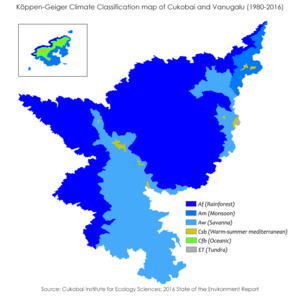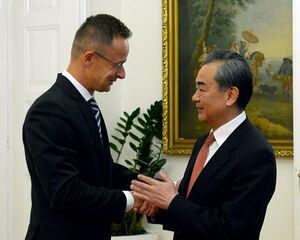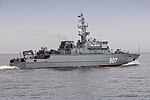Sandbox:Mannatiua: Difference between revisions
| Line 52: | Line 52: | ||
{{wpl|Melanesians|Veigalun peoples}}, which were often the most targeted by the Princely Army during the Black Days, as well as by centuries of abuse under the Sultanate, felt that the anarchist government as established under the 1910 [[Universal Declaration of Human Liberty]] had failed to prevent historic mistreatment by colonial Dusunpans and {{wpl|Italian people|Aesculinese}}, and sought to establish their own ethno-states which would remove the offending colonial populations and influences, an effort largely focused on the island of [[Vanugalu]]. In 1951, a united [[Veigalun Liberation Army]] seized a Black Army weapons cache and dockyard located in [[Nakeba]], prompting the beginnings of the [[Vanugalu War]], a fierce {{wpl|guerrilla warfare|guerrilla campaign}} which caused significant damage to the economy and reputation of the still-developing Federation. The conflict was brought to a ceasefire and peace agreement following the ratification of the 1953 Constitution, when greater protections for non-Dusunpan minorities and anti-discriminatory educational programs were given high priority under the new government arrangement. However, protests among Veigalun people have endured over the years due to historic underemployment and other economic hardships, as well as land developments which conflicted with the authority of local governments, most notably in and around the Gunungangin region of Vanugalu, where a number of research facilities and tourist areas have been developed over the latter half of the 20th Century. Because of the disdain of the locals for non-Veigaluns, this has become an area rife with anti-federalists, with some theorizing that such attitudes were responsible for the [[Barupertama Observatory Incident|dissapearances and supposed deaths of 60 scientists from Huajiang and the Cukobaian mainland at the Barupertama Observatory in July of 2019]]. | {{wpl|Melanesians|Veigalun peoples}}, which were often the most targeted by the Princely Army during the Black Days, as well as by centuries of abuse under the Sultanate, felt that the anarchist government as established under the 1910 [[Universal Declaration of Human Liberty]] had failed to prevent historic mistreatment by colonial Dusunpans and {{wpl|Italian people|Aesculinese}}, and sought to establish their own ethno-states which would remove the offending colonial populations and influences, an effort largely focused on the island of [[Vanugalu]]. In 1951, a united [[Veigalun Liberation Army]] seized a Black Army weapons cache and dockyard located in [[Nakeba]], prompting the beginnings of the [[Vanugalu War]], a fierce {{wpl|guerrilla warfare|guerrilla campaign}} which caused significant damage to the economy and reputation of the still-developing Federation. The conflict was brought to a ceasefire and peace agreement following the ratification of the 1953 Constitution, when greater protections for non-Dusunpan minorities and anti-discriminatory educational programs were given high priority under the new government arrangement. However, protests among Veigalun people have endured over the years due to historic underemployment and other economic hardships, as well as land developments which conflicted with the authority of local governments, most notably in and around the Gunungangin region of Vanugalu, where a number of research facilities and tourist areas have been developed over the latter half of the 20th Century. Because of the disdain of the locals for non-Veigaluns, this has become an area rife with anti-federalists, with some theorizing that such attitudes were responsible for the [[Barupertama Observatory Incident|dissapearances and supposed deaths of 60 scientists from Huajiang and the Cukobaian mainland at the Barupertama Observatory in July of 2019]]. | ||
==Equipment== | ==Equipment== | ||
===Infantry and Personal Equipment=== | ===Infantry and Personal Equipment=== | ||
| Line 427: | Line 345: | ||
| Largely utilized in patrols in the Atlantic Channel. Developed during the [[Jhokan War]] to ensure the conflict in the area did not disrupt regional trade significantly. | | Largely utilized in patrols in the Atlantic Channel. Developed during the [[Jhokan War]] to ensure the conflict in the area did not disrupt regional trade significantly. | ||
|----- | |----- | ||
=Car Company= | =Car Company= | ||
{{Infobox company | {{Infobox company | ||
Latest revision as of 22:17, 23 May 2020
Geography


The landmass of Cukobai is divided between its mainland territory on the continental portion of Lautania and the Vanugalu Islands in the Deris Sea. At 581,875.8 km2 (224,663.5 sq mi), Cukobai is the largest country in Lautania by land area. The mainland is defined by five distinct ecoregions, from west to east - the Derisian (or West Cukobaian) Rainforest, Tikatika High Plateau, Sungailama River Basin, the Tanatinggi, and Pasebasu. While the Derisian and Sungailama Rainforests are actually part of a single contiguous rainforest ecosystem which covers 85.9% of the country's continental landmass, the difference in hydrology makes for significant differences in flora, fauna, and ease of access or settlement by humans. The coastal plains on average extend from 15 to 150 kilometers (9 to 93 mi) from water's edge, though significant variability exists.
The Derisian Rainforest region reaches an average elevation of 90 meters (295 ft) above sea level. It is marked by rolling and hilly terrain, and is exceedingly hot and humid, marked by a short dry season, and is home to some of the wettest places in the world. The coastlines contain a number of major settlements, including the nation's capitol, Bandar Cukobai, and plays host to key fisheries and economic zones. Additionally, the Inner Derisian, sometimes considered part of the Tikatika ecoregion, plays host to the bulk of the nation's coffee-growing operations, one of the country's historic exports. While the presence of agriculture has expanded along the western coastlines in recent years, the overall soil topology of this area is poor for continued cropping, as the topsoil, while carbon-rich and productive, is exceedingly thin and vulnerable to excessive tillage or disturbance, and subsoil zones are largely composed of rock and loose, unstructured sediment.
The Tikatika High Plateau rises from the coastal plains at about 650 meters (2,133 ft) above sea level. The alternation between wet and dry seasons are much more even, allowing for a generally comfortable, less humid climate. Soils here are markedly fertile, and hosts nearly all of the country's livestock and grain farming thanks to this and the region's generally level terrain. Historically, most non-coastal settlements have been established here, thanks to its ease of farming and travel.
The Sungailama River Basin is one of the most biodiverse regions in the world, composed of a rich riparian landscape with dipterocarp, swamp, and mangrove rainforests. Peat swamp forests occupy much of the basin's northern coastline. Erosion of the region's limestone bedrock by the Sungailama River and its tributaries have carved a number of dramatic features and karst topography, including some of the world's largest cave systems. However, this is considered an older geographic feature of the continent at large, and thanks to this elevation generally reaches 760 meters (2,493 ft) above sea level at its highest, with greater elevations encircling it to the southwest and east giving way to the Tikatika and Tanatinggi highlands, respectively. This rainforest is considered the wettest area in Lautania, and because of that has historically made mass settlement difficult, with key locales being settled along the Sungailama, as its terminus at Belau makes it critical for regional and global trade. While homesteading further inland has been encouraged by the national government, the practice is often faced with fierce criticism from local indigenous communities and conservationists alike, making any serious attempts at settling new areas in the Sungailama for economic development virtually nonexistent in recent decades.
The Tanatinggi highlands are host to the coolest, most temperate regions of the country, and includes the only true mountains, the Tangatatapu Range which mark a portion of the nation's border with Iuliania, as well as only portions of mainland Cukobai that experience snowfall annually. At 4,095.2 meters (13,436 ft), Gunungputih, sometimes referred to as Mount Bianca abroad (especially by Aesculians), is the highest point in Cukobai. Aside from
The Pasebasu is a low-lying, relatively dry region in comparison to the rest of the nation, which extends from the eastern foot of the Tangatatapus into Iuliania. It is the only portion of the country which experiences monsoon rains, and thanks to its placement in a modest rain shadow, does not experience the same degree of humidity that covers the bulk of the national mainland. This region has the smallest coastal area of all Cukobai's ecoregions at only 28 kilometers (17.39 mi) of shoreline, as the coastal swamps of the Derisian-Sungailama Rainforest system reaches its northernmost extent there. Thanks to its extended dry season, a wider variety of crops can be grown here, including the nation's famous saffron fields, as well as Cukobai's only internationally-recognized wine-producing regions.
Government and Politics
Foreign Relations
- Main Article: Foreign relations of Cukobai

Since its establishment as the sole legitimate government of Cukobai in 1914, the foreign policy of the federation has changed dramatically with their geopolitical situation in order to keep a degree of fluidity on the world stage, though there have generally been a tendency towards three overarching priorities. The first is economic and political solidarity with the nations and peoples of Lautania, especially aimed at encouraging the adoption of republican modes of government and development of diverse, stable societies - which Cukobai attempts to foster through consistently acting as a mediator in contentious political or military issues. A special emphasis is placed on maintaining ties with their main ally in efforts in regional decolonization, Whaeamoe, and outreach to independence movements within the neighboring Aesculinese territory of Iuliania. The second is ensuring the safety of trade in the Deris Sea and the Southern Lautan Ocean, and cooperating with other nations and organizations to curb piracy therein. The third is military non-interventionism, especially outside of Lautania, though the nation does not accept irrevocable neutrality as a viable prospect in world politics. Military resources are primarily devoted to acting towards peacekeeping efforts, disaster relief, and securing of the nation's vital waterways, frontiers, and border regions.
Disputed Territorial Claims
Due to its contentious period of suzerainty in the sphere of the Aesculinese Colonial Empire from 1792 to 1914, the modern Cukobaian Federation continues to seek a return of areas settled by ethnic Dusunpans in Iuliania during the peak of the Sultanate period, which were gradually taken as part of concessions for the War of 1866 and as part of the Belau Agreement at the close of the Second Cukobaian Revolution and reestablished Cukobaian independence. Additionally, the Agreement established the nation of Whaeamoe as an independent republic, though its status as a formerly integrated region of the Sultanate has led some Cukobaian irridentists, as well as anarchist groups within Whaeamoe to seek a reunion of these nations.
Separatist and Irridentist Movements
Internally, ethno-nationalists have sought to carve their own independent states from the Federation, or to rejoin other nation-states, both throughout the history of the nation and presently. Nearly every ethnic community in Cukobai has a fringe movement that has participated towards the completion of one of these aims, though among the most prominent since the establishment of the Federation have been Dusunpan supremacists and Indigenous nationalists.
The Black Days in particular, which rocked the nation in the 1940s and was a major precipitating incident in the reorganization of Cukobai into its modern constitutional form, was instigated by a far-right Dusunpan extremist organization known as the Princely Army which triggered a brief border war with Aesculinese security forces in Iuliania, This exchange was intended to create a new Sultanate in Lautania modeled after the short-lived [X] military junta which existed contemporaneously with the chain of aborted revolts. It is for this reason that irridentist movements for the annexation of Dusunpan-majority regions of Iuliania are often dismissed as fringe (and often dangerous) beliefs for its linkage to the Black Days.
Veigalun peoples, which were often the most targeted by the Princely Army during the Black Days, as well as by centuries of abuse under the Sultanate, felt that the anarchist government as established under the 1910 Universal Declaration of Human Liberty had failed to prevent historic mistreatment by colonial Dusunpans and Aesculinese, and sought to establish their own ethno-states which would remove the offending colonial populations and influences, an effort largely focused on the island of Vanugalu. In 1951, a united Veigalun Liberation Army seized a Black Army weapons cache and dockyard located in Nakeba, prompting the beginnings of the Vanugalu War, a fierce guerrilla campaign which caused significant damage to the economy and reputation of the still-developing Federation. The conflict was brought to a ceasefire and peace agreement following the ratification of the 1953 Constitution, when greater protections for non-Dusunpan minorities and anti-discriminatory educational programs were given high priority under the new government arrangement. However, protests among Veigalun people have endured over the years due to historic underemployment and other economic hardships, as well as land developments which conflicted with the authority of local governments, most notably in and around the Gunungangin region of Vanugalu, where a number of research facilities and tourist areas have been developed over the latter half of the 20th Century. Because of the disdain of the locals for non-Veigaluns, this has become an area rife with anti-federalists, with some theorizing that such attitudes were responsible for the dissapearances and supposed deaths of 60 scientists from Huajiang and the Cukobaian mainland at the Barupertama Observatory in July of 2019.
Equipment
Infantry and Personal Equipment
Pistols
| Name | Image | Origin | Type | Cartridge | Details |
|---|---|---|---|---|---|
| Mardef SH7 | 
|
Semi-Automatic Pistol | .50 Action Express | 7-Round Magazine. Standard-issue sidearm alongside the Caracal F, added to arsenal in 1999. Favored by special forces. | |
| Caracal F | 
|
Semi-Automatic Pistol | 9×19mm Parabellum | 15-Round Magazine. Standard-issue sidearm. |
Submachine Guns
| Name | Image | Origin | Type | Cartridge | Details |
|---|---|---|---|---|---|
| Uzi | 
|
Submachinegun | 9mm Parabellum | 12-Round Magazine. Standard-Issue Submachinegun. |
Rifles
| Name | Image | Origin | Type | Cartridge | Details |
|---|---|---|---|---|---|
| Mardef AR13-B | 
|
Bullpup Assault Rifle | 5.56×45mm | 35-Round Magazine. Standard-issue Assault Rifle. Added to Arsenal in 1999. Can be fitted with various optical sights. Has a notched barrel, capable of accepting under-barrel attachments. | |
| Mardef AR19 | 
|
Bullpup Assault Rifle | 5.56×45mm | 35-Round Magazine. Selected as replacement as main service rifle in 2017. Currently utilized exclusively by Special Forces, and slated to replace the AR13 in Marensoald by 2027. May be equipped with suppressors. | |
| Schecter SR-25 | 
|
File:LiiduriaFlag.png Liiduria | Designated Marksman Rifle | 7.62×51mm Entente | 10-Round Magazine. Designated Marksman Rifle for all Branches of the MPDF. |
| Mardef NTW-20 | 
|
Anti-Materiel rifle | 14.5×114mm | 3-Round Magazine. Equipped to MPA Snipers and to Special Forces Units. Comes equipped with a 8 × 56 Telescopic sight. |
Shotguns
| Name | Image | Origin | Type | Cartridge | Details |
|---|---|---|---|---|---|
| TEDE Striker | Shotgun | 12 gauge | 12-Round Rotating Drum Magazine. Standard-Issue Shotgun for MPDF Forces. | ||
| Mardef MAG-7 | 
|
Shotgun | 12 gauge | 7-Round Magazine. Reserved for Special Forces and Mousquetaires. |
Machine Guns
| Name | Image | Origin | Type | Cartridge | Details |
|---|---|---|---|---|---|
| Negev | 
|
Light machine gun | 7.62×51mm Entente | 150-Round Ammunition Belt. | |
| Schecter UMP | 
|
File:LiiduriaFlag.png Liiduria | General purpose machine gun | 7.62×51mm Entente | Disintegrating M13 Link Belt with 50-Round Segments linked in-cartridge. |
Armor and Motorized
| Name | Image | Origin | Type | Amount in Service | Details |
|---|---|---|---|---|---|
| Albawma | 
|
Armored personnel carrier | 370 in Service | Developed as part of a TEDDE joint research venture in 2012. Primary APC utilized by Peoples' Army, often preferred in Urban Environments and by Military Police Units. | |
| Fahd | 
|
Armored personnel carrier | 450 In Service | Has significant defense against anti-tank mines and small arms fire. Primary APC used by Mousquetaires and Home Guard, also utilized by the MPA in Peacekeeping Operations. | |
| VCI-3b | 
|
Infantry Fighting Vehicle | 600 In Service | Primary vehicle utilized by motorized infantry divisions in Marensoald. Improved version of early ASU Infantry Fighting Vehicles jointly developed by Veleaz and Marensoald following their breakup from the Union. Has considerable resistance to anti-tank mines, mortar fire, and other explosives. Additionally hardened against chemical, biological and radiological attacks. | |
| T-72 | 
|
Main Battle Tank | 488 In Service | Main battle tank of the MPDF. Imported in the mid-1980s from Veleaz. |
Aircraft
| Name | Image | Origin | Type | Amount in Service | Details |
|---|---|---|---|---|---|
| Jichonyeusi | 
|
Transport helicopter | 58 | Multi-purpose transport helicopter. Highly resistant to small-arms fire. | |
| MD 500 | 
|
Utility Helicopter | 35 | A small utility helicopter. | |
| Loftus M-7 | 
|
Licensed by Template:Country data Federal Socialist Union |
Multirole Fighter | 28 | Primary Combat Aircraft deployed. Domestic licensed version of the FSU/Veleazean MiG-21, first produced in Batisuria in 1965 as the M-5. Upgraded in 1988 and again in 1999 to current M-7 variant. |
| C-19/C-19t Razorjet | 
|
Light fighter jet Trainer |
21 | Only Current Fighter domestically produced. Designated Light Fighter jet. Concurrently developed alongside the C-19t, a stripped-down model utilized as a Training jet chiefly among Batisurian allies. | |
| AT-12 Caballo | 
|
Military Transport Aircraft | 14 | Turboprop Transport and Utility plane utilized by all branches of the BPDF. |
While most naval craft are utilized by the Batisurian Navy, a significant portion are also utilized for home defense and border security purposes. Such differences in operation are noted. For names of Vessels operated by the BPDF, see Names of Batisurian Naval Vessels.
Car Company
| Name | Image | Origin | Type | Amount in Service | Details |
|---|---|---|---|---|---|
| Résolu Class | 
|
File:LiiduriaFlag.png Liiduria |
Submarine | 6 | 1st-Generation Nuclear-Powered Attack Submarine developed in 1980s by joint Liidurian-Batisurian Development. Currently the smallest Nuclear Attack Sub in service developed to date. |
| Simba Class | 
|
Cruiser | 8 | ||
| Vortex Class | 
|
Frigate | 10 | ||
| Bouclier Class | 
|
Patrol Vessel | 140 | Currently deployed for River Patrol use by the Navy, and for Home Guard Harbor Patrols | |
| Varatra Class | 
|
File:LiiduriaFlag.png Liiduria |
Patrol Vessel | 80 Deployed, 40 Awaiting Completion | Depolyed for Inshore and Coastal Patrols for use by the Navy. Scheduled to replace Bouclier-Class Vessels for all Inshore Patrols by 2028. |
| Main de Fer Class | 
|
File:LiiduriaFlag.png Liiduria |
Mine Countermeasure Vessel | 4 Deployed, 6 Awaiting Completion | Largely utilized in patrols in the Atlantic Channel. Developed during the Jhokan War to ensure the conflict in the area did not disrupt regional trade significantly. |
 | |
| Public | |
| Industry | Automotive |
| Founded | December 12, 2012 as Watuunguvu Automotive Group Limited June 1, 1959 as Watuunguvu-Mwiga Automotive Industry Enterprises December 12, 1960 as Mwiga Engine Company |
| Founder | Lucius Courbet Damián Ureña |
| Headquarters | , |
Area served | Worldwide |
Key people | |
| Products | |
| Services | |
| Revenue | |
Number of employees | 432,486 (2017) |
| Parent | Marensoald Federal Commission for State-Administered Corporations and Assets |
Watuunguvu Automotive Group Limited, or simply Watuunguvu Auto (formerly Watuunguvu-Mwiga Automotive Industry Enterprises) is a Marensaise State-owned automotive design and manufacturing company headquartered in Mwiga, with multinational operations primarily centered in other nations in Majula and Arabekh. The company has the highest production output of any automaker in Majula. Beyond standard passenger vehicles, Watuunguvu is also the largest manufacturer of passenger busses in Majula, unique for creating models designed to withstand rough road conditions found in some of the more disparate parts of its home country. This eye for developing for undeveloped areas and those in need for a truly durable vehicle in general has granted it significant global appeal, especially in other less-developed nations.
The origins of Watuunguvu can be found in the early days of the Marensaise auto industry during the immediate aftermath of the Marensaise Long War, where international sanctions on the pre-war minority government forced the beginnings of domestic industry, which were quickly seized as major strategic assets by the budding revolution shortly after the conflict's commencement. Following the war, Watuunguvu was officially founded as the Mwiga Engine Company in 1959 when the Veleazean Regional Industry Minister, Damián Ureña, approved plans to develop a jointly-owned auto company with the young nation, paving the way for the development of the longest-running Marensaise-Foreign Joint Venture in the Industry. Notable brands developed today by Watuunguvu beyond its flagship line include Haboob, a major global off-road vehicle designer, which today is the primary sponsor of the famous Deux-Capitale Rally-Raid, and Flacqadhama, currently the only luxury car designer operating in Marensoald.
History
Foundation and Early Years (1958-1974)
The Golden Age of Marensaise Auto (1975-1989)
Modern Watuunguvu (1990-Present)
Corporate Affairs
Marketing
Sponsorships
Slogans
Products and Services
Automotive Product Lines
- Tambo - Trucks, SUVs, Station Wagons, Trailers, Commercial Vehicles
- Watuunguvu - Passenger, performance cars, minivans, crossovers, SUVs
- Haboob - Off-road vehicles, Trucks, SUVs, Crossovers
- Flacqadhama - Performance, luxury sedans, convertibles
Parts Product Lines
- Mwigacom - Replacement parts, dealer and customer repair service for Watuunguvu Vehicles
- Mwigacom Performance - Performance aftermarket parts for Watuunguvu Vehicles




